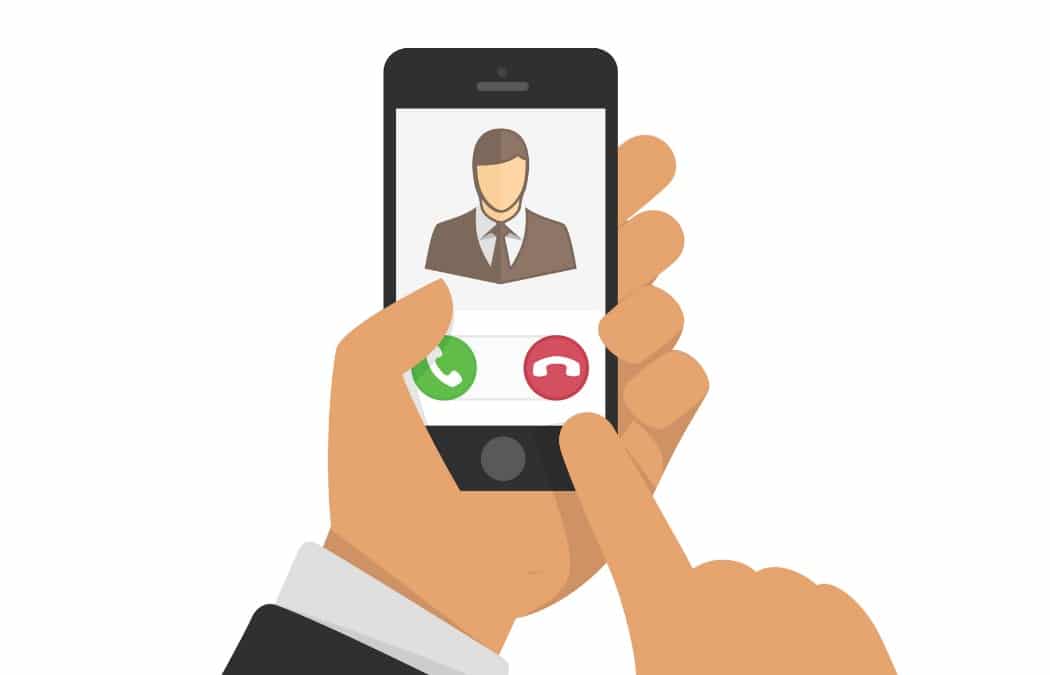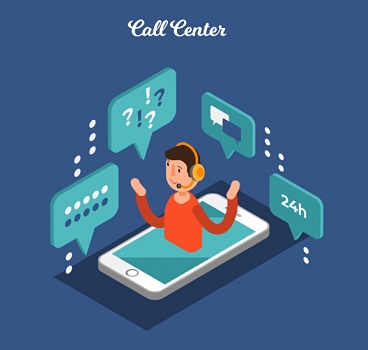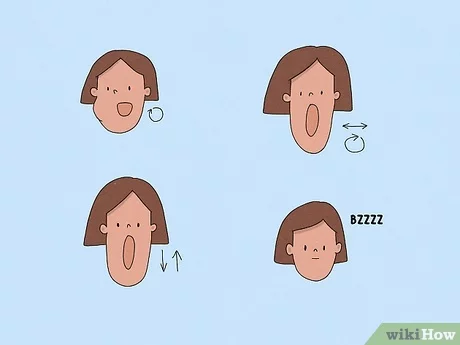Why is It Called Communication?
Communication is called so because it involves the exchange of information through words, gestures, or other means. It is the process of sharing or conveying messages between individuals or groups.
Effective communication is vital in both personal and professional settings as it helps in expressing thoughts, feelings, and ideas, as well as understanding and interpreting others’ perspectives. It enables collaboration, understanding, and building strong relationships. In today’s digitally connected world, communication has become even more important, with various channels and platforms available for instantaneous interaction.
Whether through verbal or non-verbal means, communication serves as a bridge that connects people, allowing them to connect, collaborate, and share information. We will explore the different aspects of communication and its significance in various aspects of life.

Credit: www.ringcentral.com
What Is Communication?
Communication is the way we connect and exchange information with others. It is the cornerstone of human interaction and plays a vital role in our daily lives. Whether it’s verbal or non-verbal, communication helps us convey our thoughts, feelings, and ideas effectively.
Without communication, we would struggle to express ourselves, understand others, or establish meaningful relationships. Communication enables us to share information, seek clarification, express emotions, and collaborate on projects. It bridges gaps, resolves conflicts, and fosters understanding among individuals and communities.
In essence, communication is the key that unlocks doors, opens opportunities, and brings people closer together. Understanding the definition and significance of communication helps us appreciate its power and utilize it to enhance our personal and professional lives.
Origins Of The Term
Communication, as a term, has its origins rooted in the latin word “communicare” which means “to share”. Through the course of history and its etymology, communication has evolved and acquired a broader meaning. Initially, it referred to the exchange of information and ideas between individuals or groups.
However, as societies advanced, so did the concept of communication. It now encompasses various forms, such as verbal and non-verbal communication, written communication, and even digital communication. The term not only signifies the transmission of thoughts and feelings but also encompasses the act of understanding and interpreting messages.
Communication enables us to connect, collaborate, and build relationships, playing a fundamental role in human interaction and societal development. So, “communication” aptly represents the profound process of sharing and understanding information among individuals, shaping our world through effective exchange.
Non-Verbal Communication
Communication is not limited to verbal expressions. Non-verbal communication plays a crucial role in conveying messages. Understanding the different types of non-verbal communication is important. It includes body language, facial expressions, gestures, and even eye contact. These non-verbal cues can often convey emotions and intentions more accurately than words.
They can also help in building rapport and establishing a connection with others. Non-verbal communication is a powerful tool that enhances the effectiveness of verbal communication. It can add layers of meaning and depth to our interactions. Mastering non-verbal communication can lead to better understanding and stronger relationships with others.
So, next time you communicate, pay attention to the non-verbal signals you send and receive.
Body Language
Communication is not only about spoken words, but also about body language. The way we use our bodies can convey powerful messages and emotions. Body language plays a crucial role in understanding and interpreting communication. It can convey confidence, interest, discomfort, and even deception.
For example, crossed arms may signal defensiveness, while eye contact can indicate engagement and attentiveness. By understanding and interpreting body language cues, we become better communicators. It helps us to adjust our own body language and to perceive the underlying message in a conversation.
Moreover, body language can be universal across cultures and languages, making it an essential aspect of effective communication in different settings. Being mindful of our own body language and observing others’ can enhance our communication skills and foster better connections with those around us.
Facial Expressions
Facial expressions play a crucial role in communication, accentuating and conveying emotions without words. They can enhance understanding and establish a connection between individuals. A smile can indicate happiness, whereas a raised eyebrow might signal surprise or disbelief. However, if facial expressions are misread or misinterpreted, they can hinder effective communication.
For example, a frown could be misinterpreted as anger instead of concern. Furthermore, some cultures may have different interpretations of certain expressions, leading to misunderstandings. The significance of facial expressions in communication lies in their ability to complement verbal communication and provide additional context and emotional cues.
It is essential to pay attention to these nonverbal cues to fully understand and engage in successful communication.
Gestures And Symbols
Communication is a fascinating term that encompasses various forms of expression among individuals. Gestures and symbols play a vital role in this process, traversing cultural boundaries. These nonverbal cues are embedded with significance, yet their interpretation can differ across different societies.
The way people understand gestures and symbols in one culture might not necessarily align with another’s perception. Therefore, it is crucial to recognize and respect these cultural differences when engaging in cross-cultural communication. These disparities underline the complexity of communication, reminding us that there is more to it than just spoken language.
By being aware of the cultural nuances tied to gestures and symbols, we can bridge gaps, foster understanding, and promote effective communication in an increasingly interconnected world.
Verbal Communication
Verbal communication is an intriguing aspect of human interaction. Language and vocabulary play a crucial role in effective communication. We express our thoughts and feelings through words, using them to convey messages and build connections. The power of verbal communication lies in its ability to create immediate understanding and facilitate social interactions.
However, it also has limitations. Sometimes, words fail to accurately express complex emotions or concepts. Miscommunication can occur due to differences in language, cultural backgrounds, or individual interpretation. Nevertheless, mastering the art of verbal communication is essential for building strong relationships, fostering teamwork, and resolving conflicts.
It requires active listening, choosing the right words, and adapting communication styles to different situations and audiences. By continuously improving our language skills, we can enhance our ability to connect, collaborate, and understand one another.
Written Communication
Communication is called so because it involves the exchange of information. In the case of written communication, this exchange is done through written words. Written communication has its advantages and challenges. One of the advantages is that it provides a permanent record that can be referred to.
Additionally, it allows for proper documentation and can be sent across distances. However, it also presents challenges such as misinterpretation and lack of immediate feedback. Therefore, it is important for written communication to be clear and concise. Clarity ensures that the message is understood as intended, while conciseness helps in conveying information effectively.
By avoiding lengthy and complex sentences, and using simple and direct language, the writer can improve the clarity and conciseness of their written communication.
Spoken Communication
Communication is the exchange of information through spoken words. Spoken communication plays a vital role in conveying messages effectively. It is an art that requires certain techniques for improving speech delivery and public speaking skills. By practicing clear and concise speech, individuals can capture their audience’s attention and convey their message with greater impact.
Developing good body language and vocal tone also contribute to effective spoken communication. Engaging the audience with eye contact and appropriate gestures can help establish a connection. Public speaking skills are essential for conveying information, persuading others, and inspiring change.
By honing these skills, individuals can become proficient communicators, making their message more accessible and influential. Mastering the art of spoken communication allows individuals to express themselves clearly, fostering understanding and collaboration in any setting.
Technological Impact On Communication
Technology has completely transformed communication, both positively and negatively. On the positive side, technology has made communication faster, easier, and more convenient. With the advent of smartphones and the internet, we can now connect with people from all over the world in mere seconds.
Long-distance relationships have been made easier, businesses can easily collaborate across borders, and families can keep in touch effortlessly. However, there are drawbacks as well. Technology can hinder face-to-face interactions and lead to a decline in social skills. People are becoming more dependent on digital communication, which may result in misunderstandings and misinterpretations.
There’s also the issue of privacy and security, as information shared online can be vulnerable to hacking and misuse. Overall, technology has revolutionized communication, but we must be aware of the potential downsides and find a balance between the digital and physical world.
Cross-Cultural Communication
Communication is the lifeline of human interaction, connecting us across cultures and boundaries. Cross-cultural communication is the act of conveying information between individuals from different cultural backgrounds. It is characterized by unique challenges, requiring individuals to navigate diverse perspectives, values, norms, and language barriers.
The importance of cross-cultural communication cannot be underestimated in today’s globalized world, as it fosters mutual understanding, cooperation, and collaboration. It helps to bridge cultural gaps, enhance relationships, and promote empathy and respect. Successful cross-cultural communication involves strategies such as active listening, cultural sensitivity, open-mindedness, and adaptability.
By understanding and addressing these challenges, individuals can embrace diversity and cultivate effective communication skills that transcend cultural differences. By doing so, we can build stronger connections, promote inclusivity, and foster positive interactions in an increasingly interconnected world.
Communication In The Digital Age
Communication, in the digital age, has undergone significant changes due to the influence of social media. Online platforms have dramatically altered the way people interact and connect with one another. These platforms have provided individuals with new avenues for expressing their opinions, thoughts, and emotions.
With the rise of social media, communication has become more instantaneous, allowing people to connect instantly and share information in real-time. The widespread availability of smartphones and internet access has made communication more accessible and convenient. However, this shift has also brought challenges, such as information overload and the potential for miscommunication.
Despite these challenges, it is undeniable that social media has revolutionized communication, enabling people to connect globally and create diverse communities online. As technology continues to evolve, it will be interesting to see how communication adapts and transforms in the future.
Enhancing Communication Skills
Effective communication is called so because it encompasses various aspects of human interaction. It involves expressing and exchanging thoughts, ideas, and information. Improving communication skills is essential for successful relationships, whether personal or professional. To become a better communicator, one must focus on active listening and empathy.
By actively listening to others, we can understand their perspectives and respond appropriately. Empathy allows us to put ourselves in someone else’s shoes, aiding in effective communication. Tips for enhancing communication skills include practicing active listening, maintaining eye contact, using appropriate body language, and providing feedback.
Additionally, using clear and concise language, being open-minded, and respecting different opinions are essential. By honing these skills, we can better connect with others, foster understanding, and build meaningful relationships.
Effective Listening
Communication is a term used to describe the exchange of information between individuals. Effective listening plays a crucial role in this process. To practice active listening and understanding, there are a few helpful strategies. First, maintain eye contact and nod in agreement to show that you are engaged.
Second, refrain from interrupting and allow the speaker to finish their thoughts. Third, ask open-ended questions to seek clarification and show interest. Fourth, paraphrase what you have heard to confirm your understanding. Lastly, be aware of the barriers that can hinder effective listening, such as distractions or preconceived notions.
By following these practices and overcoming these obstacles, we can enhance our ability to communicate effectively and truly understand one another.
Empathy In Communication
Empathy plays a crucial role in communication, helping us build authentic connections. By understanding and relating to others’ emotions, we can truly connect with them. It involves actively listening, putting ourselves in their shoes, and responding with compassion. Practicing empathy requires techniques like paying attention to non-verbal cues, showing genuine interest, and validating others’ feelings.
This allows for a deeper understanding. Empathy in communication contributes to effective problem-solving, conflict resolution, and overall relationship-building. When we communicate empathetically, we create a safe space for sharing ideas, concerns, and perspectives. It fosters trust, respect, and mutual understanding.
Through empathy, our words gain more meaning and impact, enhancing the quality of our interactions. So, by cultivating empathy in communication, we can build stronger connections and foster positive relationships with others.
Frequently Asked Questions For Why Is It Called Communication?
Why Is Communication Called Communication?
Communication is called communication because it is the process of conveying information or exchanging ideas between individuals or groups. It allows people to connect and share thoughts, feelings, and experiences. By communicating, we can understand and be understood by others, which is essential for building relationships and achieving common goals.
Through various channels such as speaking, writing, gestures, and technology, communication facilitates the transfer of messages effectively. It enables us to express ourselves, seek clarification, and collaborate with others. Without communication, it would be challenging to coordinate, cooperate, and interact with one another.
Therefore, communication plays a vital role in our daily lives and is crucial for personal, professional, and social interactions.
What Is It Called Communication?
Communication is the exchange of information between individuals using words, gestures, or other forms of expression. It is a crucial aspect of human interaction and an essential part of everyday life. Through communication, people can convey thoughts, ideas, emotions, and intentions to others.
It enables us to understand and be understood, fostering relationships, cooperation, and collaboration. Effective communication involves active listening, clear articulation, and the ability to adapt to different situations and audiences. It plays a vital role in personal relationships, business transactions, education, and various other aspects of society.
Without communication, it would be challenging to connect with others, share knowledge, and coordinate actions. In summary, communication is the process of sharing and interpreting information, enabling meaningful interaction and mutual understanding between individuals.
When Was The Term Communication Coined?
The term communication was coined in the late 14th century. It refers to the process of exchanging information between individuals or groups. Communication allows people to convey thoughts, ideas, and emotions, enabling understanding and collaboration. During the renaissance period, communication became even more significant with the advent of the printing press, which allowed for the mass production and distribution of written materials.
Over time, advancements in technology, such as the invention of the telegraph, telephone, and internet, have revolutionized communication, making it faster and more efficient. Today, communication plays a crucial role in various aspects of life, including business, education, and personal relationships.
It continues to evolve with new platforms and tools, enabling people to connect and share information globally.
Why Is Communication Called Two-Way Of?
Communication is called two-way because it involves the exchange of information between two or more parties. It is a process where both the sender and the receiver participate actively. This means that communication not only involves transmitting a message, but also receiving feedback or responses from the other party.
By having a two-way communication, it allows for mutual understanding, clarification, and engagement between all involved. This type of communication promotes effective and efficient information sharing, as well as fostering better relationships and collaboration. Two-way communication is essential in various settings, such as in personal relationships, business interactions, and any situation where effective communication is crucial.
Conclusion
The term “communication” goes beyond its literal meaning of transferring information from one person to another. It encompasses the complex web of interactions, emotions, and understanding that are vital to human connection. By exploring the etymology of the word, we discover its origins in the latin words “communis” and “communicare,” emphasizing the idea of shared meanings and common understanding.
Effective communication requires active listening, empathy, and clear expression of thoughts and feelings. It plays a crucial role in personal relationships, teamwork, and even global diplomacy. In today’s digital age, technology has revolutionized the way we communicate, but understanding the fundamentals of human interaction remains essential.
By valuing open, honest, and respectful communication, we foster stronger connections, minimize misunderstandings, and create a more harmonious world. So let us actively engage in meaningful conversations and strive to improve our communication skills, for it is the foundation of human relationships and shared understanding.





